Virginia creeper belongs to the plant family Vitaceae which includes generally major flowering vine species of the plant. The family Vitaceae includes up to 14 different genera which encircle more than 900 known species in it. Other common names for Virginia creeper are five-leaved ivy and Victoria creeper.
The scientific name for the Virginia creeper is Parthenocissus quinquefolia. This species is also called the five-finger plant. The plant Parthenocissus quinquefolia is found in Northern and Central American regions and some of the areas of Eastern Mexico. The common name Five Finger is given because its compound leaves are arranged in sets of five smaller leaflets. And the Greek word Quinquefolia also means five-leaved plantlet.
Woodbine is the name given to this Parthenocissus quinquefolia plant in North America. Five Finger or Parthenocissus quinquefolia is a fruit and flower-bearing plant. The plant is specifically known because of the arrangement of its compound leaves. The leaves are arranged and joined with a center point on the main stalk-bearing compound leaves.
Read: Variegated Rubber Plant – Propagation and Care
These are arranged at a single point like petals are mostly arranged in a circular arrangement being attached to a base point in flowers such as roses. The stalk length can range from 2 to 12 inches. This specific arrangement is called palmately arranged compound leaves.
The Parthenocissus quinquefolia is often mixed and interpreted with another vine species called P. Vitacea and false ivy with 3 leaflets in compound leaves. These green leaves turn pink to red when they fall in the autumn season[1]Bowker, J.M., J.C. Bergstrom, and J. Gill, Estimating the economic value and impacts of recreational trails: a case study of the Virginia Creeper Rail Trail. Tourism Economics, 2007. 13(2): p. … Continue reading.
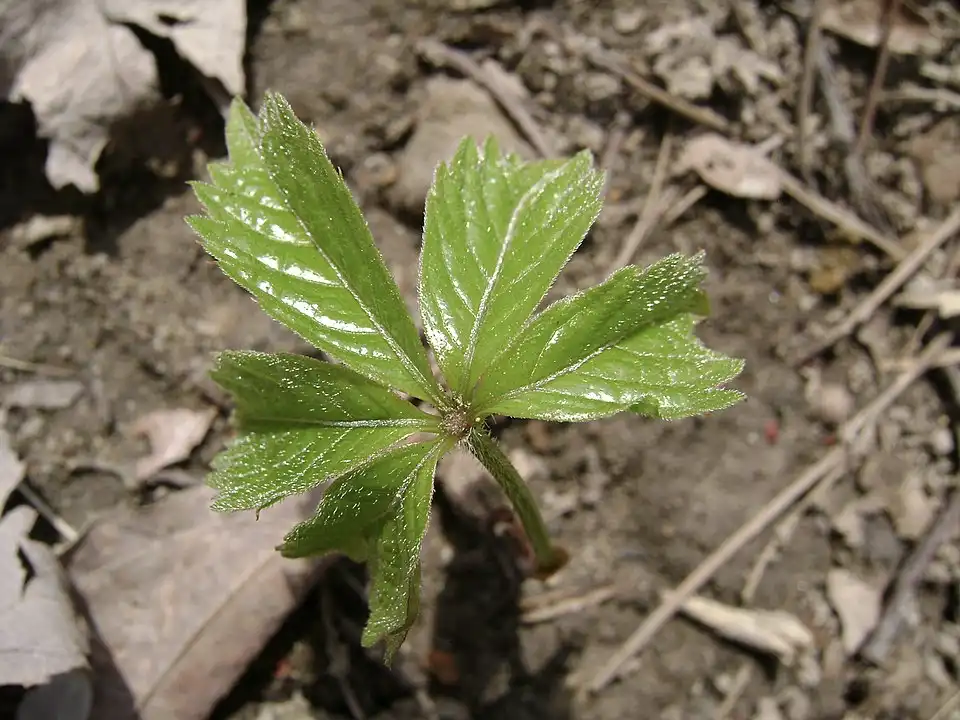
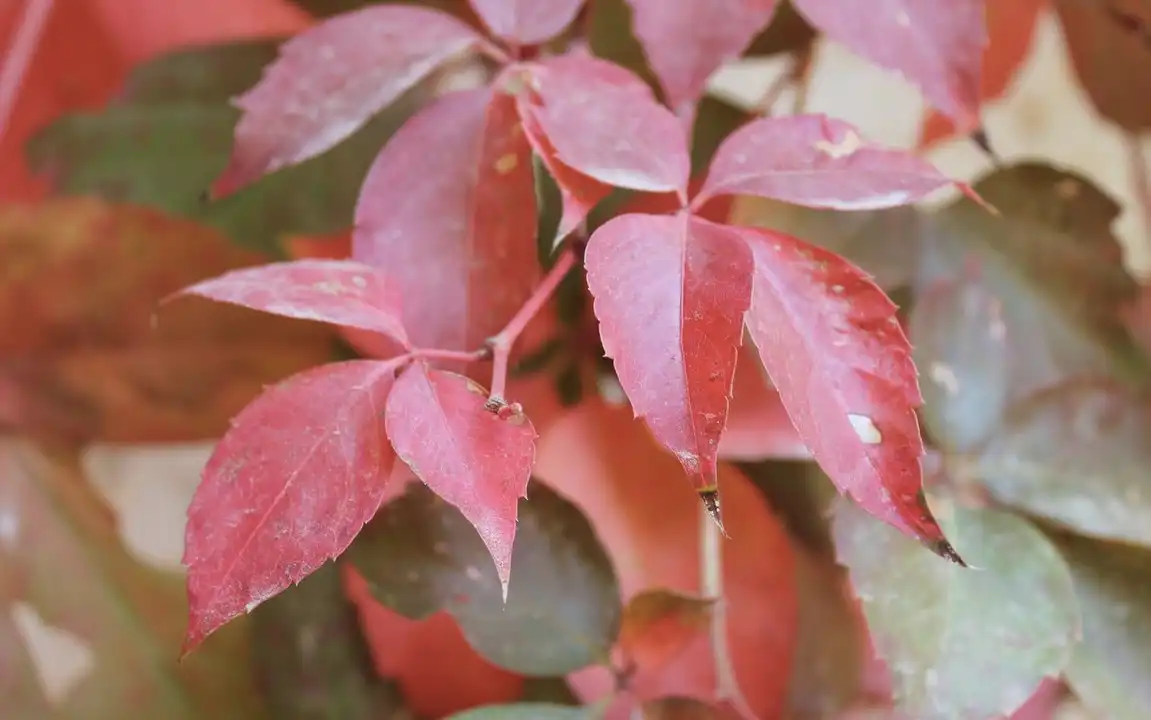
The plant bears a berry-like fruit of black to purple color. The fruit berries are full of toxic juice and sap containing crystals of oxalate and its derivatives. The leaves somehow do not produce this urushiol, (fluid having needle-like calcium oxalate crystals). The oxalate compounds are so toxic that can lead to severe skin burns allergies or blisters as well.
The fruit is very harmful when ingested by humans. It can cause irreversible kidney damage leading to the death of the consuming person. As discussed, fruit berries are toxic for human consumption, these are not even just safe for birds but they also provide enough food sources for the winter season to the birds consuming them. The flowers are green and small.
Read: Manjula Pothos – Propagation, Care, and Facts
The plant is used in gardens and the vine can be grown along the wall because of its creeping nature, it can cover the whole wall in a few weeks. Thus, it can be used as a decorative ornamental plant in the house and extensive gardens. The gardener can also make different types of fancy and attractive fences with this Parthenocissus quinquefolia plant[2]Gill, J.K., The Virginia Creeper Trail: an analysis of net economic benefits and economic impacts of trips. 2004, University of Georgia. Read.
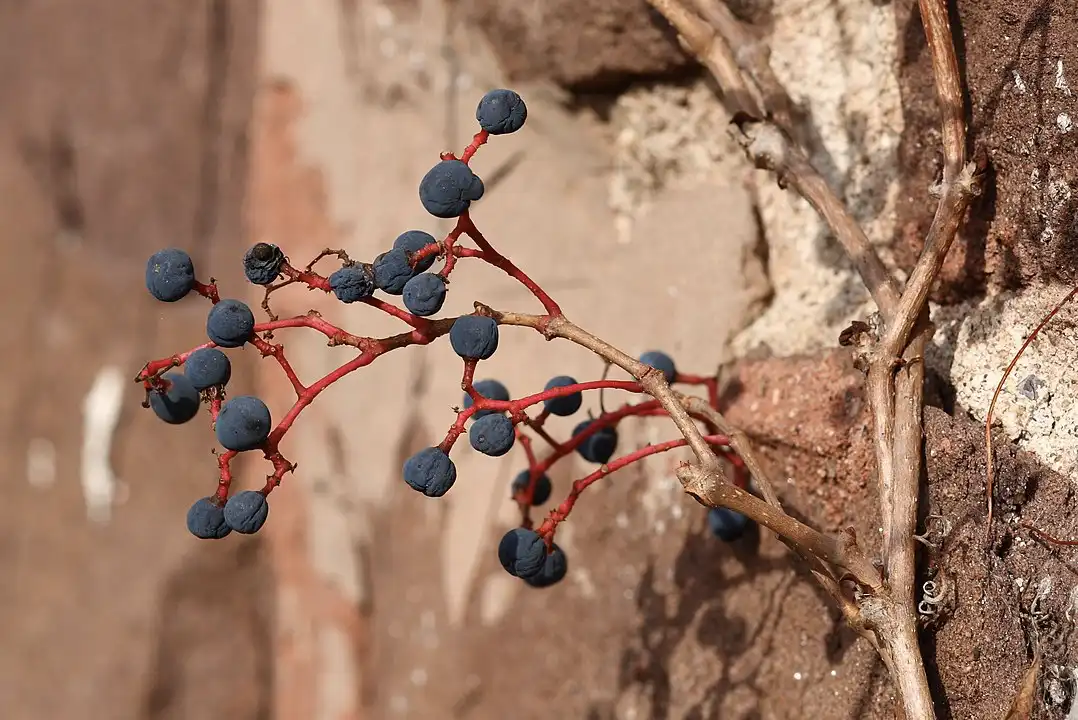
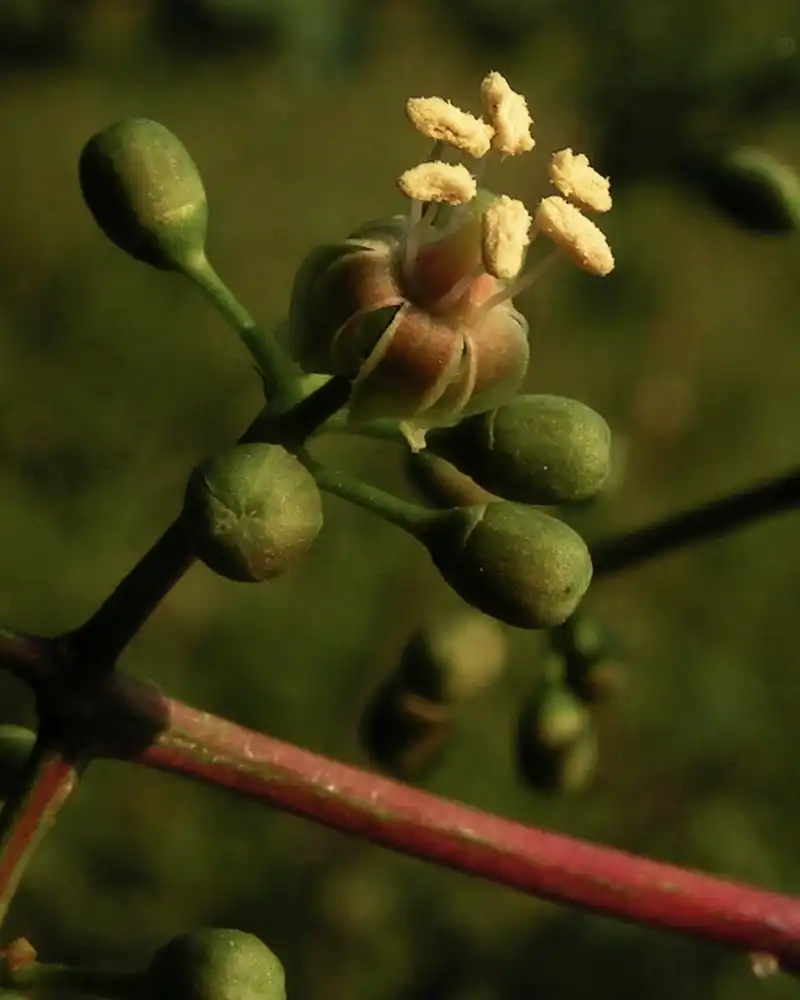
Important varieties of Virginia creeper
1. Parthenocissus Henryana
It is one of the slow-growing subspecies of Virginia creepers. Parthenocissus Haryana is usually used for short-area coverage because of its slow-spreading nature. It shows a beautiful colored pattern along with the leaflets of compound leaves. White veins are observed in this species and the particular autumn shade of the foliage is seen. This vine has also won the Award of Garden Merit by the Royal Horticulture Society. It is commonly called Chinese Creeper. The leaf edges are wavy. No harmful toxins are observed[3]Lu, L., J. Wen, and Z. Chen, A combined morphological and molecular phylogenetic analysis of Parthenocissus (Vitaceae) and taxonomic implications. Botanical Journal of the Linnean Society, 2012. … Continue reading.
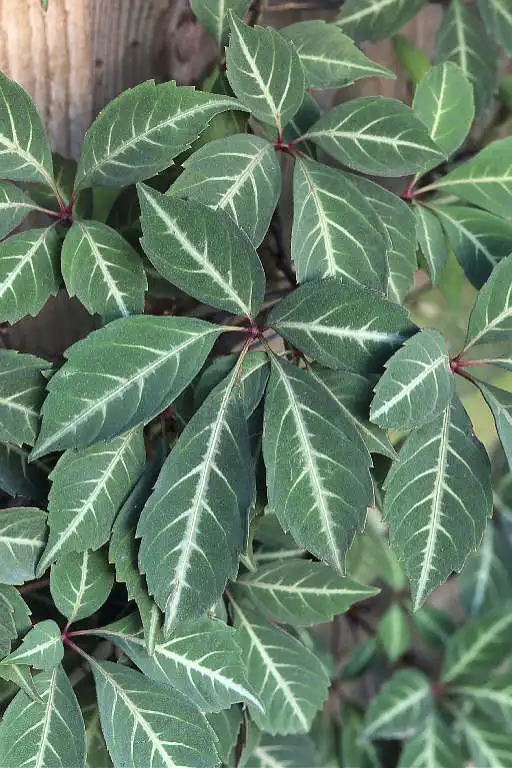
2. Parthenocissus quinquefolia ‘yellow wall’
Yellow wall is the common name of this species. The specification of this species is the small-sized green leaflets and their bright yellow or pale yellow autumn leaves. Its spread is more than the Chinese Creeper (the spread of Chinese Creeper is up to 10 to 12 meters while the yellow wall spreads up to 15 meters). It is also an invasive species growing and spreading on its own[4]WEI, Y., et al., Cooling Effect and Physiological Mechanism of Parthenocissus tricuspidata and Parthenocissus quinquefolia Planch. Acta Agriculturae Boreali-Occidentalis Sinica, 2009: p. 05. Read.
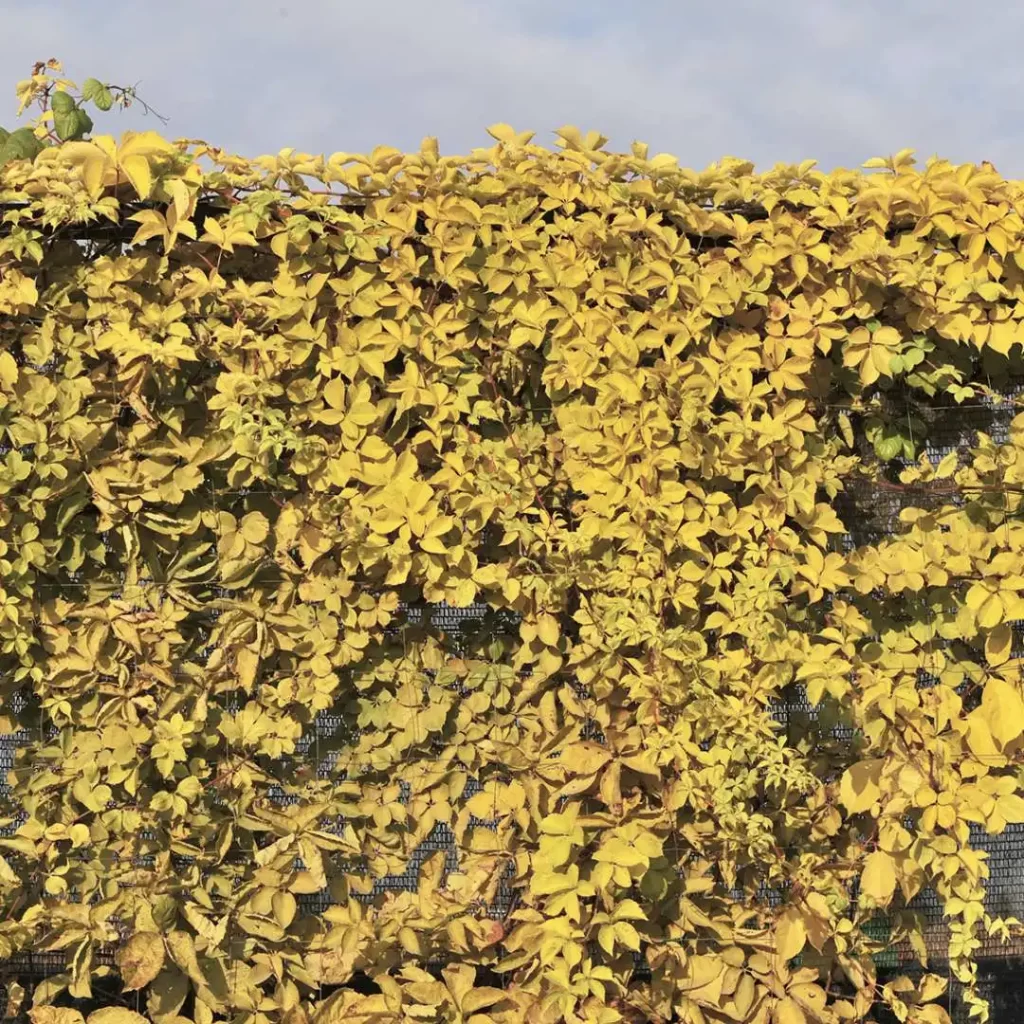
3. Parthenocissus Inserta
Basic plant appearance and characteristics resemble the Virginia creeper. The common names for this sub-type are thicket creeper, false creeper, grape woodbine, or simply woodbine. The spread of this type is up to 20 meters or more. The regions of Canada, Montana, North American regions, and Texas are the places where this type is readily found and grows actively. The stem has several small tendrils and specialized tips called twining tips for its rapid coverage over different objects. The common name thicket creeper indicates the thickness of the main stem[5]VÉGH, B., G. Schmidt, and M. Dioszegi, Characteristics of invasive taxa of Parthenocissus in the Buda Arboretum, Hungary. Scientific Papers. Series B, Horticulture, 2015: p. 427-434. Read.

4. Parthenocissus Semicordata
Other species have 5 leaflets in one compound leaf but this species has 3 leaflets in its compound leaf. Himalaya is the native region for its natural cultivation. Leaflets are wavy at the ends and the basic characters are again the same as the general Virginia creeper vine. The berries or grapes are blue to black and are toxic if ingested or chewed by humans as well as by domestic animals[6]Zafar, M., et al., Micromorphological investigation of leaf epidermis and seeds of Vitaceae from Pakistan using light microscopy and scanning electron microscopy. Microscopy research and technique, … Continue reading.
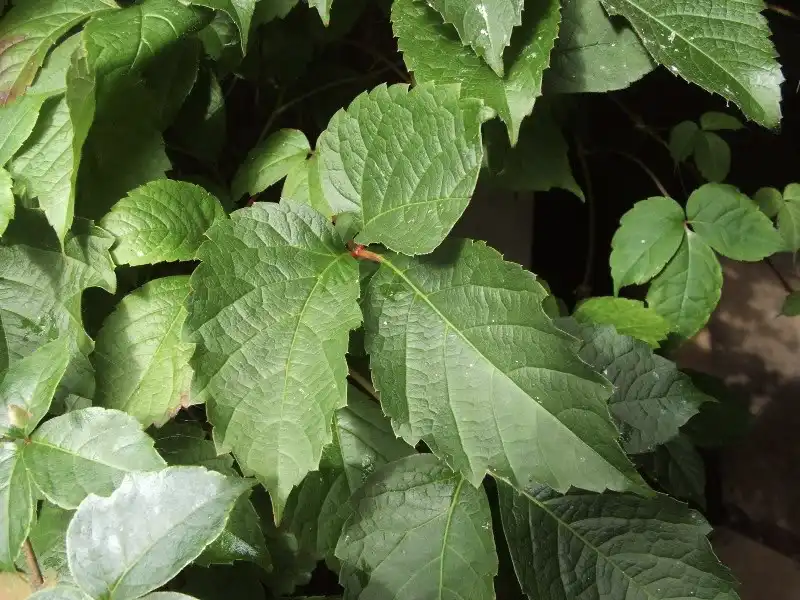
Propagation of Virginia creeper
Spread by seed and self-propagation
The plant is invasive. Once it starts flourishing, it spreads on its own. The walls, the tree plants, garden fences, and high stones are easily covered by their nature of growing rapidly. The seeds when fallen on the ground are germinated usually on their own when the temperature and humidity levels are in favor. Peat soil with medium to high moisture levels is recommended for manual sowing and planting vine plantlets. There are no specific soil or nutrient conditions for its spread.
Propagation by layering
In this process of artificial propagation, the soft stem of the vine is slightly pushed into the soil. The area pushed into the soil is usually U-shaped in appearance. The U-shaped stem part is covered with a small amount of soil. This process is repeated along the length of the vine.
Multiple stems sited are buried by this method, as a result of this burial, the lower portion of the soft U-shaped stem gives rise to the new root system of the vine and the upper part allows the plantlets to grow as small soft new stems. This process is used when we have to design the landscape with this vine by ourselves.
Propagation by root balls and rhizomes
Rootballs are the structures specified for rapid growth and propagation. They are yellow to pale and even brown. These structures have two structures, the aerial roots which help to develop a rapid root system of the vine, and the tendrils which provide the short–term support to the plantlet when its small suckers or vines do not have enough capacity to support themselves with the assistance of walls.
Read: Curly Spider Plant Propagation, Care, and Diseases
The rhizomes are one of the serious issues causing the over-blooming of the vine and deterioration of the walls. These rhizomes are thick, underground, and rapidly spreading roots which cause increased growth. So the vine plant propagates through rhizomes as well.
Propagation by cuttings
It can be transplanted by cutting and then planting the cutting of the vines. A small piece of the soft climbing stem is cut and sown or buried in moist, well-drained, and well-aerated soil. The roots and shoots develop from the cuttings. Proper watering helps to grow cuttings fast in well-aerated soil[7]Kurucz, E., et al., Cost-effective mass propagation of Virginia fanpetals (Sida hermaphrodita (L.) Rusby) from seeds. Environmental Engineering & Management Journal (EEMJ), 2014. 13(11). Read.
Care of Virginia Creeper
- All Virginia species are readily grown on soft, moist, well-drained, and well-aerated soil.
- These vine plants need regular pruning after a specific interval of time, or when the bushes of the vines get heavy enough to prune them.
- Sharp utensils and shears are used to prune it.
- Sharp shears are carefully used, the foliage is thinned down, and the main stem of the vine (which is thick in appearance) is kept away from the cutting utensil.
- Cuttings of the main stem will damage the whole vine; it may lose its growth rate.
- The Virginia species are sensitive to fungus infections and arthropod manifestations.
- Whitefly is the feeding arthropod over the leaves of the vine.
- It is not necessary to provide Virginia with heavy sunlight because it grows well in shades as well. Partial sunlight is best for heavy growth.
- Weekly watering is suggested for Virginia creepers. The recommended pH is 5.2-7.2.
- Do not let the vine be too heavy or too short; add a small amount of fertilizer and mulch to keep the soil rich in mineral contents and moist.
Harms of Virginia Creeper
The leaf stalks release fluid or sap; irritate or create rashes on the skin surface when touched directly with exposed skin. The rashes are usually developed on the skin of relatively sensitive persons. The lectin and wisteria are the reason for these skin-burning sensations. Any part of the vine that is chewed or ingested can lead to gastrointestinal infections that include nausea, vomiting, abdominal pain, mouth burns, and diarrhea.
The seeds and the fruits (berries) are rich sources of oxalic acid contents. Its chemicals are harmful to the kidneys. Pets such as dogs are also sensitive to infections when they are exposed to seeds and berries or sap[8]Gladman, A.C., Toxicodendron dermatitis: poison ivy, oak, and sumac. Wilderness & environmental medicine, 2006. 17(2): p. 120-128. Read.
References
| ↑1 | Bowker, J.M., J.C. Bergstrom, and J. Gill, Estimating the economic value and impacts of recreational trails: a case study of the Virginia Creeper Rail Trail. Tourism Economics, 2007. 13(2): p. 241-260. Read |
|---|---|
| ↑2 | Gill, J.K., The Virginia Creeper Trail: an analysis of net economic benefits and economic impacts of trips. 2004, University of Georgia. Read |
| ↑3 | Lu, L., J. Wen, and Z. Chen, A combined morphological and molecular phylogenetic analysis of Parthenocissus (Vitaceae) and taxonomic implications. Botanical Journal of the Linnean Society, 2012. 168(1): p. 43-63. Read |
| ↑4 | WEI, Y., et al., Cooling Effect and Physiological Mechanism of Parthenocissus tricuspidata and Parthenocissus quinquefolia Planch. Acta Agriculturae Boreali-Occidentalis Sinica, 2009: p. 05. Read |
| ↑5 | VÉGH, B., G. Schmidt, and M. Dioszegi, Characteristics of invasive taxa of Parthenocissus in the Buda Arboretum, Hungary. Scientific Papers. Series B, Horticulture, 2015: p. 427-434. Read |
| ↑6 | Zafar, M., et al., Micromorphological investigation of leaf epidermis and seeds of Vitaceae from Pakistan using light microscopy and scanning electron microscopy. Microscopy research and technique, 2019. 82(4): p. 335-344. Read |
| ↑7 | Kurucz, E., et al., Cost-effective mass propagation of Virginia fanpetals (Sida hermaphrodita (L.) Rusby) from seeds. Environmental Engineering & Management Journal (EEMJ), 2014. 13(11). Read |
| ↑8 | Gladman, A.C., Toxicodendron dermatitis: poison ivy, oak, and sumac. Wilderness & environmental medicine, 2006. 17(2): p. 120-128. Read |



